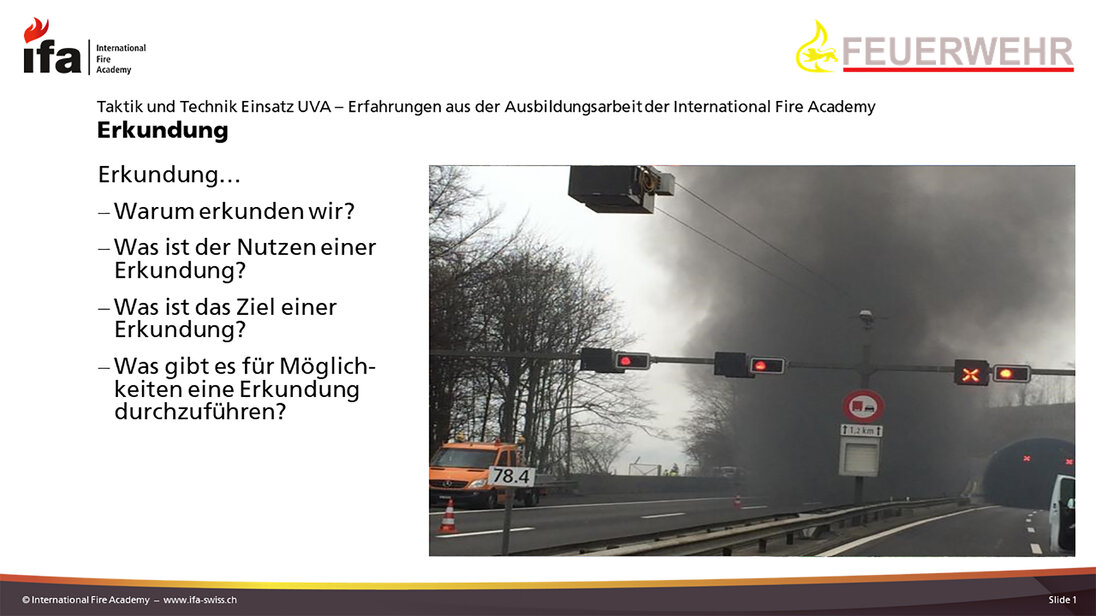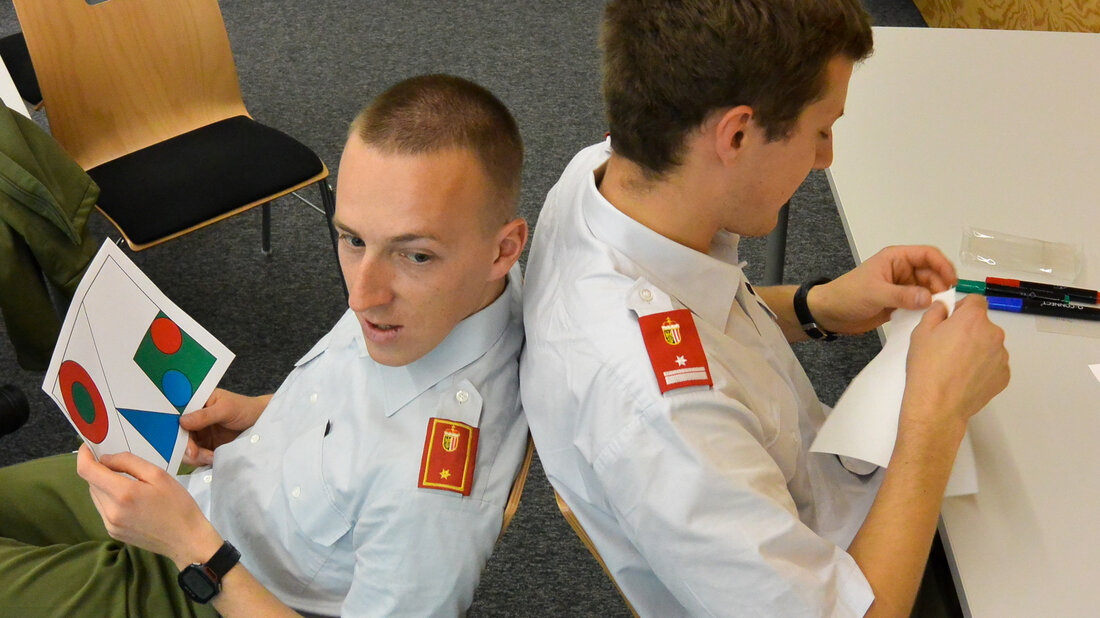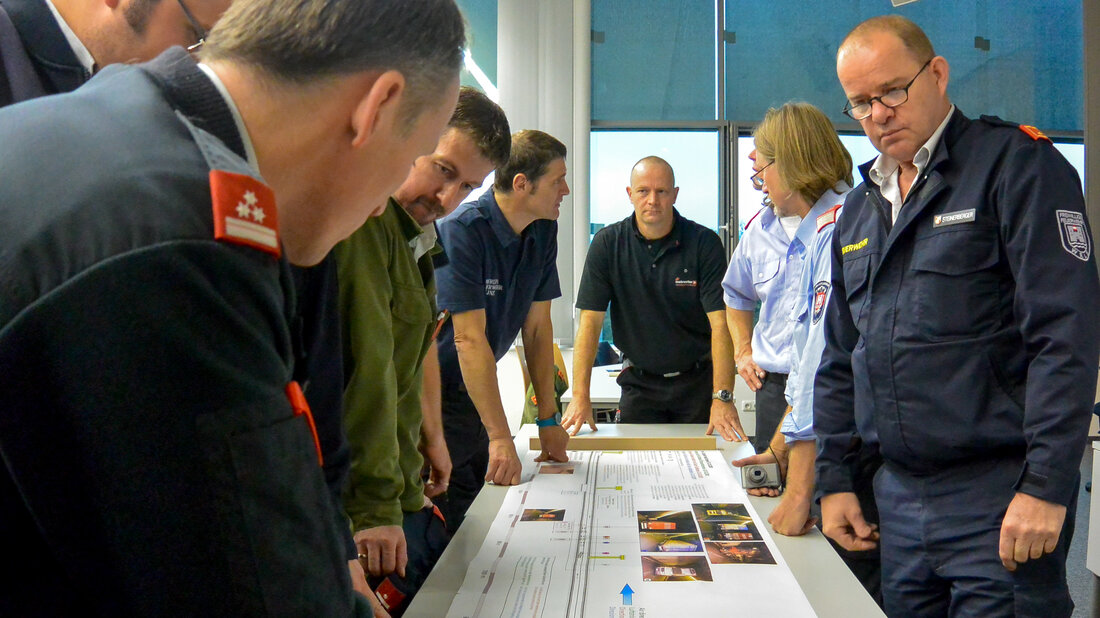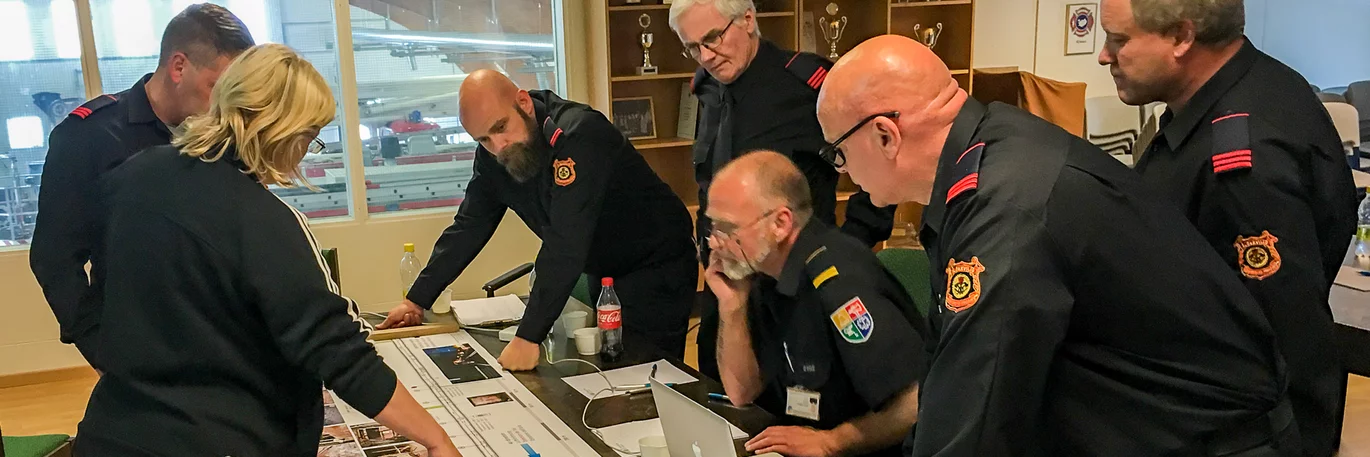The training kit is packed. Shortly before departure Markus Vogt included the latest tunnel incidents in his presentation. Next to the laptop are thick rolls of paper and printouts for case studies and communication exercises. Information and practical training sequences will alternate for the approximately 50 participants during the one-day on-site training.
Bringing everyone up to date
«I always recommend on-site training when the topic of ‹managing incidents in tunnels› is in the room, because of a new tunnel being built.» Markus Vogt also speaks from his experience as commander of a larger fire service. «It is confidence-building when the whole team learns what challenges they face, why special training is required and what preparation for tunnel operations can look like.» In his presentations, he also deals with past and current tunnel incidents. «Incidents in tunnels happen more often than you usually perceive.» In order to make this clear, Markus Vogt keeps his presentations up-to-date. So it can happen, as in Ostrava, that during a two-day training course in the second training block, he already points out new incidents that only happened the day before.

The group size is a significant advantage
Groups of 40 to 50 participants are ideal for on-site training. They also allow the case studies of tunnel incidents such as those in the Tauern or Gotthard tunnels to be investigated very well. Thereby smaller groups work on large tunnel plans with photos, timelines, and many details about the respective incident. Participants should use the documentary preparation of real-world operations to describe and assess the situation, identify dangers for firefighters and develop and explain their tactical approach.
All information about the incidents was collected by the International Fire Academy in case studies and prepared graphically for the training. This preparation conveys the development of the fire and the operational sequence very impressively to the participants.
«In Bremerhaven, I trained the entire fire service over several days.» For professional fire services, Markus Vogt prefers to use the fire station for his training courses. «Then the shift that is on duty can also join.» For volunteer fire service, the training can also take place on a weekend.

Identifying problems and need for action at an early stage
«After the training, everyone knows what distinguishes an operation in a tunnel from an everyday operation such as a building fire, what safety installations exist in tunnels and how we train.» If the feedback is: «Now we have more problems than before», Markus Vogt does not see this negatively. He then knows that the training has shown what the fire service should pay attention to and what still needs to be done. And if the tunnel system is particularly challenging tactically or technically, fire services can clarify the central questions and develop a facility-specific tactic with a workshop on-site or at the International Fire Academy before further training.

Tables, chairs and a projector
Despite the practical training sessions, Markus Vogt needs little infrastructure for his program: a room, seats for all participants, a projector, and tables for the case studies. He brings everything else with him. The first contact is usually made by email or phone. Markus Vogt likes to describe in the initial interview how on-site training usually takes place. He recommends inviting all political actors and those responsible for tunnels to the meeting - from the mayor, the safety officer to the carrier of the tunnel. «We're not giving away any secrets when we explain why we're talking about training now, even though the fire service is trained and has been doing its job so far.» However, some decision-makers only become aware of the particular dangers and challenges through on-site training. For fire services, this is an essential step on the way to more safe tunnel operations.


